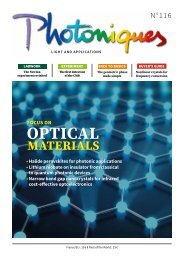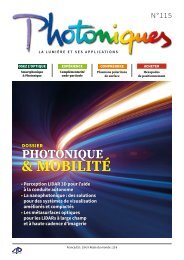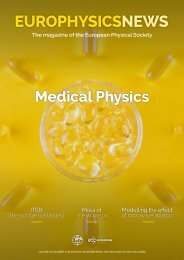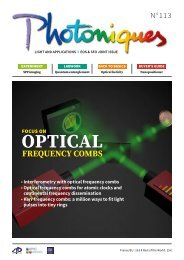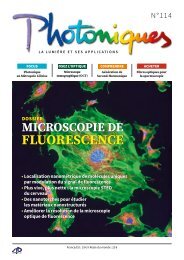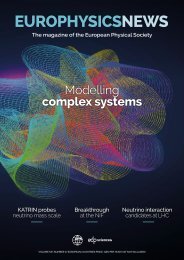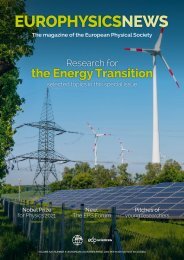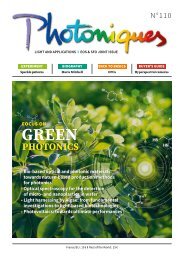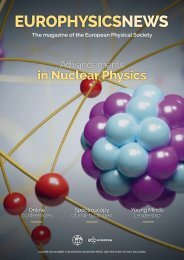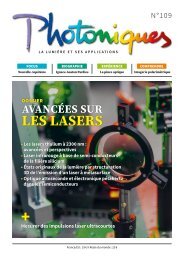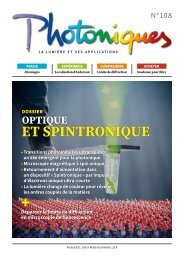Europhysics News 53-4
Europhysics News Quantum Issue
Europhysics News Quantum Issue
You also want an ePaper? Increase the reach of your titles
YUMPU automatically turns print PDFs into web optimized ePapers that Google loves.
IN THE SPOTLIGHTS<br />
Highlight from EPL<br />
Superadiabatic Quantum Batteries<br />
Recent advances in quantum thermodynamics and control theory have broadened the<br />
horizon ahead of us, leading to the development of new quantum technologies. In this<br />
context, a remarkable quantum device allows us to exploit the properties of quantum<br />
systems to efficiently store energy.<br />
This device is known as a<br />
quantum battery (QB).<br />
QBs are expected to<br />
provide energy to realize<br />
work. The maximum energy that<br />
can be extractable as work from a<br />
quantum system via unitary operations<br />
is called ergotropy. The search<br />
for reliable and efficient sources of<br />
ergotropy has motivated the community<br />
to look at a diversity of physical<br />
systems. Although QBs are a<br />
quantum analog to conventional<br />
(classical) batteries, it is evident the<br />
discrepancy between the features of<br />
classical and quantum batteries. In<br />
particular, the charging stability is a<br />
characteristic that needs to be perfectly<br />
controlled for QBs, what can<br />
be achieved through a suitable adiabatic<br />
approach. Adiabaticity is a convenient<br />
tool in quantum control to<br />
drive the system to a target state, but<br />
it may require long evolution times.<br />
Our work provides a route to achieve<br />
such a controllability in high-speed<br />
charging QBs through shortcuts to<br />
adiabaticity (STA).<br />
By using a system composed of<br />
a pair of entangled quantum bits<br />
(qubits) working as a QB and an auxiliary<br />
qubit working as a consumption<br />
hub, we first proposed the use of<br />
both entangled Bell states and adiabatic<br />
dynamics to provide a novel kind<br />
of stable and power switchable QBs.<br />
However, due to fundamental limitations<br />
of the evolution speed imposed<br />
by the validity conditions to adiabaticity,<br />
the performance of such a device<br />
would be, in principle, drastically<br />
affected by undesired interactions between<br />
the battery and its surrounding<br />
environment. In adiabatic QBs, the<br />
charging power is constrained by the<br />
m Top: Sketch of the initial and final state of the QB-consumption<br />
hub (or charger-QB) system, where adiabatic and superadiabatic<br />
strategies can be used to a same purpose (energy transfer).<br />
Bottom: Representative graphs showing the expected advantage<br />
of superadiabatic QB concerning its adiabatic counterpart.<br />
total evolution time τ ch required to<br />
adiabatically drive the system from<br />
an empty battery state to a fully<br />
charged one. If we take into account<br />
decoherence processes, a second time<br />
scale τ coh , associated to the coherence<br />
time of the system, needs to be considered<br />
and the condition τ ch



